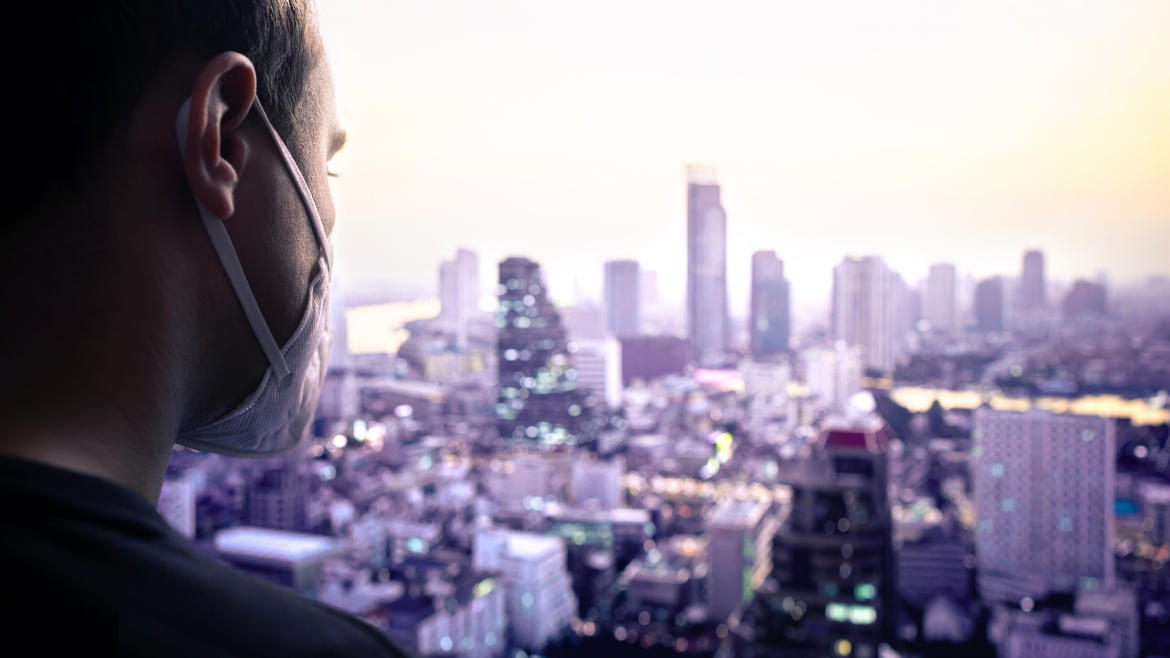Covid-19 is causing huge negative impacts on health, well-being and the economy. But tucked away in the corner of many news reports has been one small change that appears to be for the good—improved air quality. Satellite data first revealed lower concentrations of the pollutant nitrogen dioxide (NO2) over China in February 2020. Lower air pollution has since been detected in other cities around the world as travel restrictions have been introduced and manufacturing wound down.
Calculating the extent to which air quality has improved is an imprecise art since we will never know exactly what an alternative start to 2020 would have looked like. Comparing lockdown periods in major cities against the weeks immediately preceding these measures, or against the same weeks in previous years, generates some useful indications. Significant reductions are being seen in not only NO2 (which comes primarily from road transport) but also fine particles smaller than 2.5 microns in diameter (referred to as PM2.5).
Every city is different, and the exact changes are impacted by the weather, but air-quality improvement is widespread. In London for the week ending March 29th, initial estimates suggested that PM2.5 was perhaps only half the concentration of that which might be expected at this time of year. NO2 in Madrid had fallen by a similar degree.
Better air during the pandemic is more than a scientific curiosity or a useful piece to lighten unrelenting bad news. Air pollution is the largest cause of global preventable death, accounting for millions of lives lost each year. The greatest sufferers are those with respiratory illnesses (such as chronic obstructive pulmonary disease and asthma) or heart disease, and particularly older people who have pre-existing comorbidities. This is a roll-call of the same vulnerable groups that are currently the most affected by covid-19.
The extent to which air pollution might exacerbate the impact of this virus is not yet known, but analyses of other pandemics such as the 1918 Spanish flu indicate that living in cities with poor air quality worsens your chances of survival. Given what is known about the biological mechanisms by which pollution aggravates weakened lungs and diseased cardiovascular circulatory systems, it is an unhelpful additive factor placing greater strain on healthcare systems already operating at their absolute limits—and in some cases beyond.
With this in mind, better air quality arising from travel and work restrictions is likely generating a small beneficial effect, albeit superimposed on a very bad situation. The exact scale of the two competing factors may well emerge in years to come as the data are fully crunched. There will almost certainly be a global “lives saved” dividend from this period of unplanned but widespread improved urban air quality. However, it is too early to say how this will compare against the final death toll of covid-19.
The temporary changes seen in air quality may also tell us something about the future: what an urban world could be like if weaned from dense road transport, congestion and the internal combustion engine. The World Health Organisation recommends that PM2.5 pollution should be no higher than 10 micrograms per cubic metre over the course of a year, a challenging target for large cities. Since PM2.5 comes from many different sources, both inside cities and beyond, the route to achieving that target—or indeed its technical and economic feasibility—is not always clear. This unprecedented period may finally lift the smog to give a glimpse of what might be possible for cities in the future.
The views and opinions expressed in this article are those of the author(s) and do not necessarily reflect the views of The Economist Group or any of its affiliates. The Economist Group cannot accept any responsibility or liability for reliance by any person on this article or any of the information, opinions or conclusions set out in the article.




